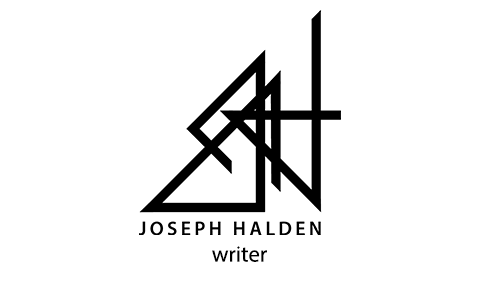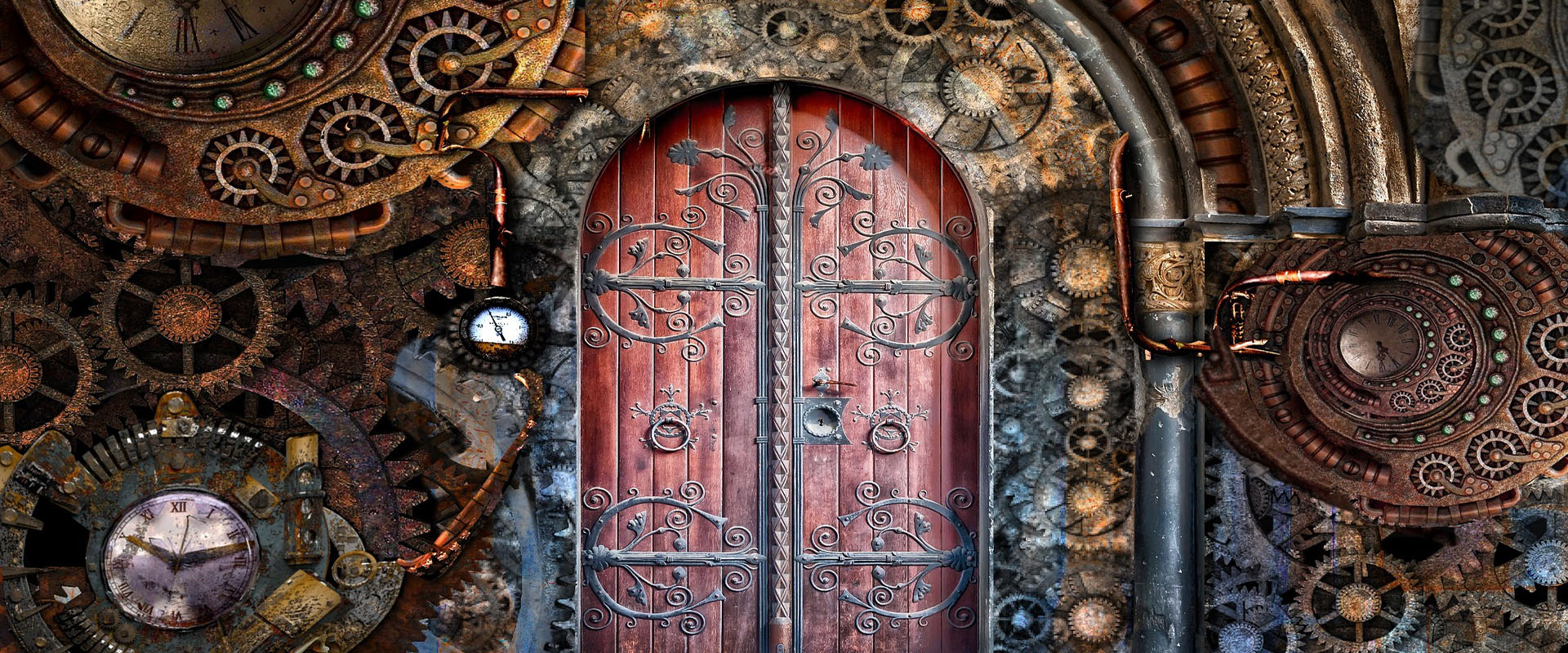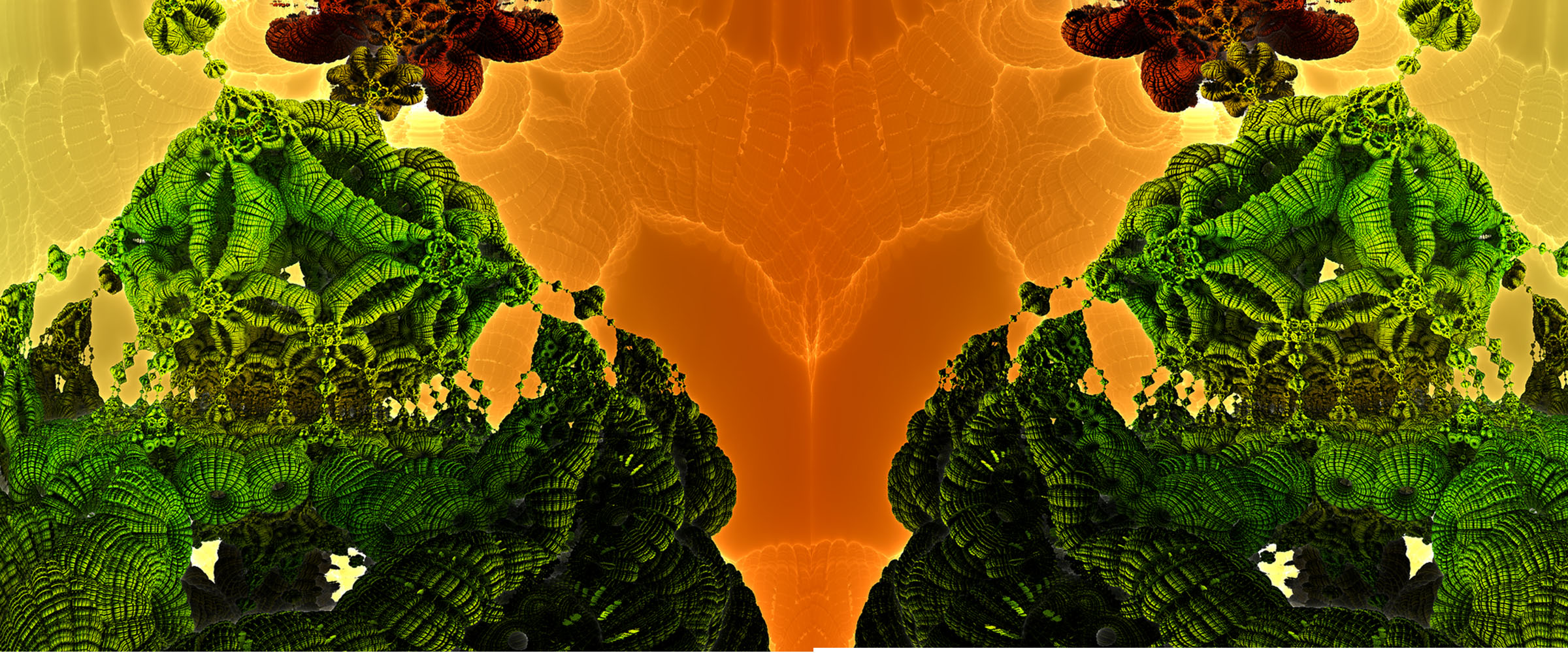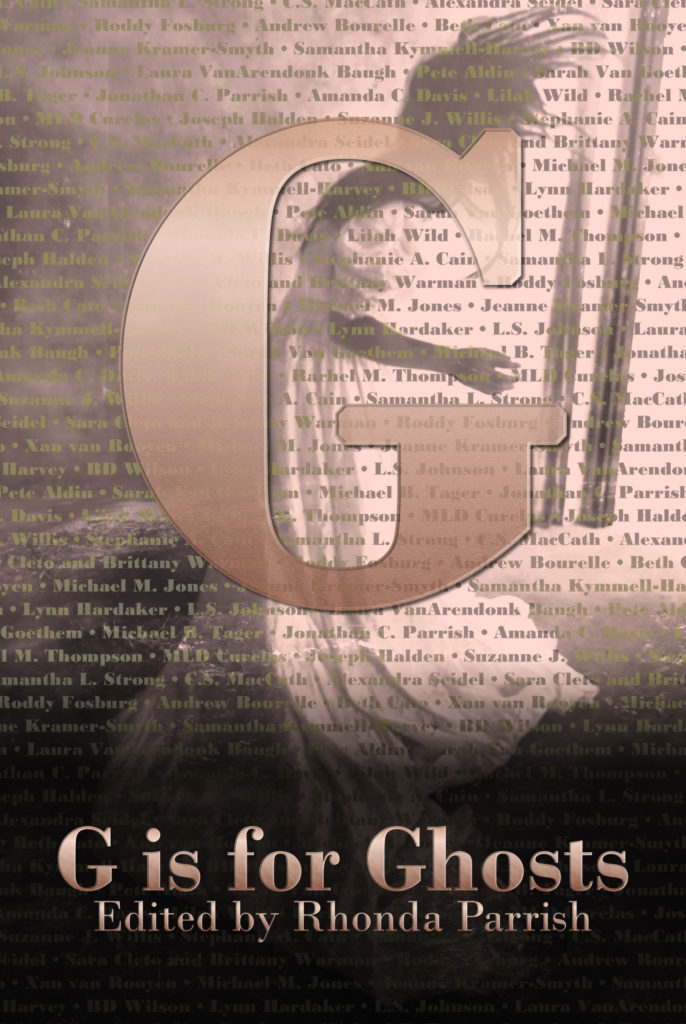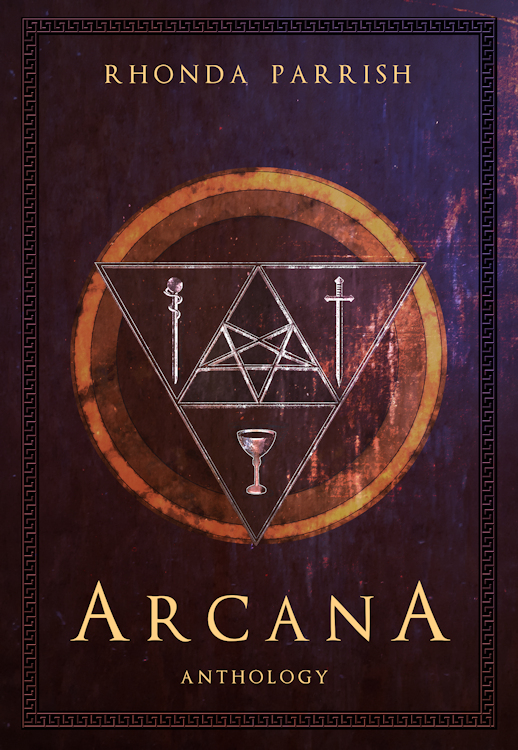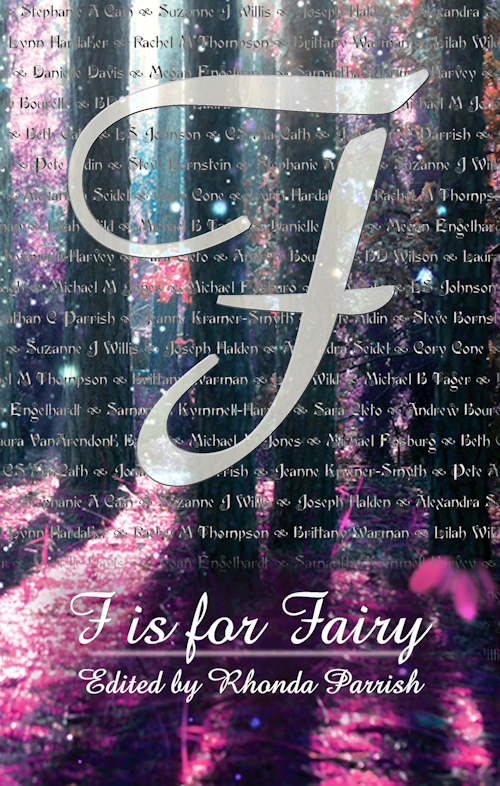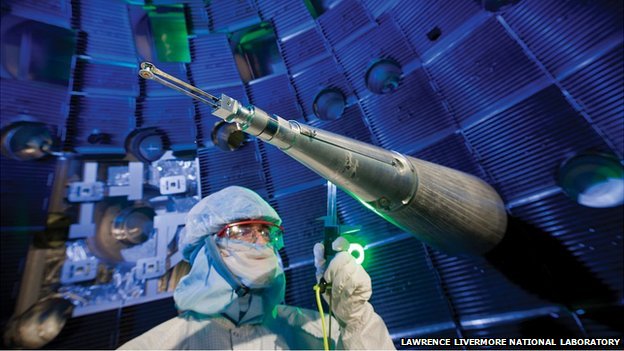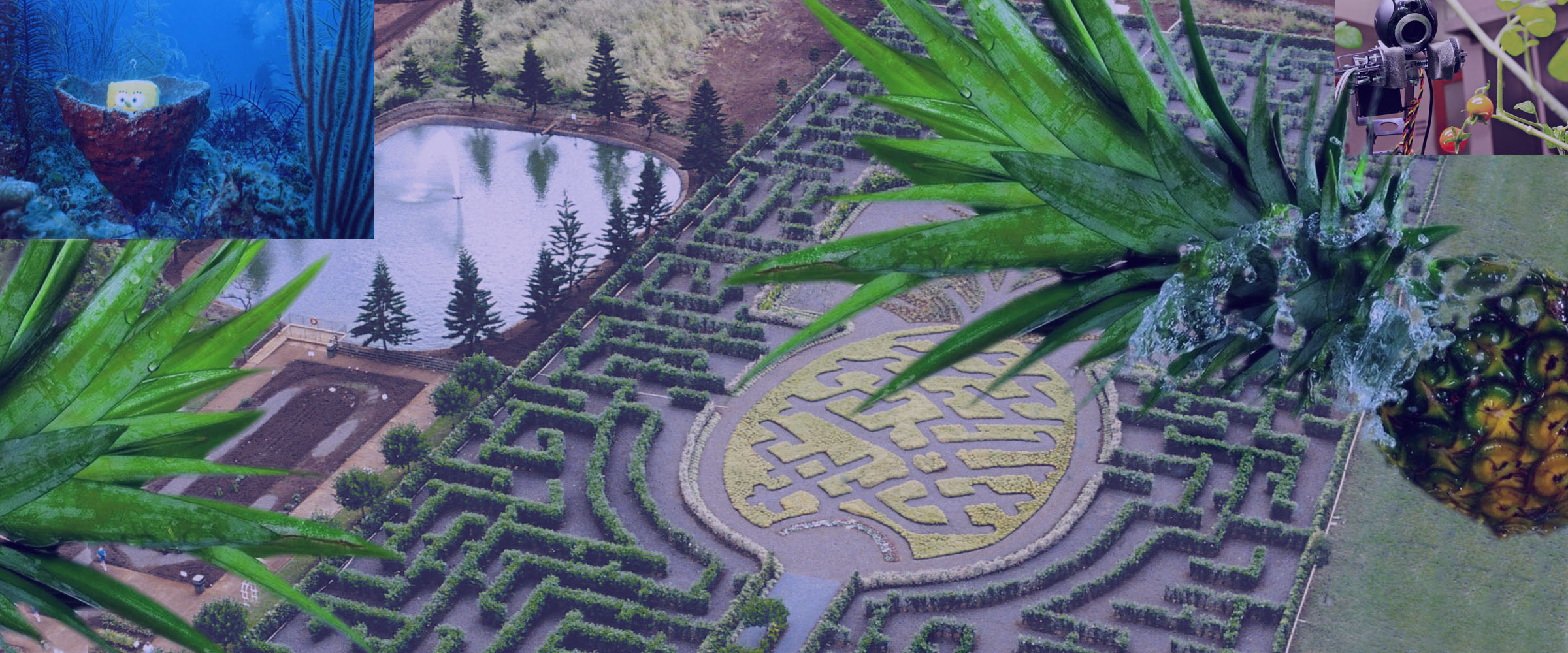About
A wizard in search of magic, an astronaut in need of space, and a hopeless enthusiast of frivolity. I’ve shot things with giant lasers, worn an astronaut costume to try and get into space, and made my own soap. A graduate of the Odyssey Writing Workshop, I write SF&F in Edmonton, Alberta.
I spent a good chunk of my Master’s research on fusion, so I have to share this.
Nuclear fusion milestone passed at US lab.
Wow. This is AWESOME news.
Why? At the end of a very expensive research campaign that made big promises, there was great potential for fusion research to be shunned and pushed to the fringes indefinitely, to the great detriment of humanity. This milestone means more legitimacy in scientific communities around the world, with more effort toward this ultimate source of green energy.
We’re not quite wearing fusion belts yet, Mr. Asimov, but we’re getting there.
 I probably don’t need to tell you who lives in a pineapple under the sea, but for those interested in selecting the ideal underwater dwelling, I’ve put together this helpful flow chart to get you on the right track. And here are some good reasons why you’d want to live under the sea. For the record, yes, this flowchart implies that Aqua Man would live in an aquarium.
I probably don’t need to tell you who lives in a pineapple under the sea, but for those interested in selecting the ideal underwater dwelling, I’ve put together this helpful flow chart to get you on the right track. And here are some good reasons why you’d want to live under the sea. For the record, yes, this flowchart implies that Aqua Man would live in an aquarium.
Okay, so maybe you’re not a sponge, and maybe your pants don’t happen to be square (or rectangular, as the case may be). But you still want to live in a pineapple. Under the sea. Can you do it?
First of all, there is evidence that the plucky yellow sponge does not, in fact, live in a real pineapple under the sea, since his house displays bilateral symmetry which no natural pineapple would ever exhibit. It just so happens that, looking from the top of the fruit, the number of clockwise spirals and counter-clockwise spirals have totals that are two consecutive numbers in the Fibonacci sequence. (The Fibonacci sequence is a collection of numbers formed by adding the two preceding values, starting with 0,1, followed by 1,2, 3, 5, 8, 13, etc.). As pointed out by Vi Hart, SpongeBob’s pineapple does not exhibit this beautiful display of math in nature.
But I digress. It is clear that the show is a fictionalized account of a heroic sponge living on the frontier of the ocean floor, and some dramatization may have misrepresented certain details. On to the more pressing matters.
The Pressure
Any diver can testify to the tremendous water pressure at very large depths. Pressurized suits (with or without squirrel) are needed beyond a certain point. Can a pineapple handle it?
The first thing the pineapple has on its side is shape. It turns out that one of the best ways to withstand the tremendous fluid pressures is with a cylindrical tower or sphere. I think our oblate tower of citrus counts.
 What about overall compressive strength? A study in Guangdong, China, was done with the aim of making robotic pineapple pickers, who obviously do not want to rupture the fruit. It turns out that between 0.146 – 0.243 MPa is the compression limit for fresh Bali pineapple. This is about 2.4 atmospheres of pressure, and corresponds to a maximum ocean depth of 14 m. One can hardly say that qualifies as “under the sea”. We could conduct a more in-depth study ourselves on other varieties of pineapple, but that would probably involve using a penetrometer, which doesn’t sound like any fun at all. I wish I were joking.
What about overall compressive strength? A study in Guangdong, China, was done with the aim of making robotic pineapple pickers, who obviously do not want to rupture the fruit. It turns out that between 0.146 – 0.243 MPa is the compression limit for fresh Bali pineapple. This is about 2.4 atmospheres of pressure, and corresponds to a maximum ocean depth of 14 m. One can hardly say that qualifies as “under the sea”. We could conduct a more in-depth study ourselves on other varieties of pineapple, but that would probably involve using a penetrometer, which doesn’t sound like any fun at all. I wish I were joking.
Is there a way around this limit? In canning and preservation processes, structural rigidity can be increased by bathing fruit in calcium salts, which forms hard calcium pectates. It is hard to imagine that such a controlled environment could improve the compressive strength by more than double, which still only brings us down a few dozen meters. Botanists can’t solve our pineapple fever.
Maybe structural engineers can. It seems like there is a metal lining in parts (if not all) of SpongeBob’s home. Concrete compressive strength is about 50 MPa, whilst steel is about 200 MPa (corresponding to 5000 m and 20,000 m, respectively). Mariana’s Trench (the deepest known part of the ocean) has a maximum depth of 10.9 km, so somewhere in between steel and concrete would do just fine for our fruit housing needs.
There have been demonstrable improvements to asphalt concrete by replacing the coarse aggregate with palm kernel shells. Maybe we could do the same with pineapple?
You can certainly make delicious foam with it, but that’s not of the construction variety. You can cook in it, make drinks in it, salad decorations, compile a detailed list of associated crafts on which to use its various parts, eat the shell, and even make paper out of it. But can you make a concrete composite out of it?
It seems that, generically, organic materials can be made into composites and other nifty things for construction. Even here in Edmonton, Alberta, a huge portion of the city’s waste is recycled into fuels, construction materials, quite literally using the garbage to pick up the garbage. It’s remarkable how far humanity has come in this regard. However, pineapple shell is not listed on Mother Nature’s building materials, nor is it on California’s approved green materials list. No! How has the pineapple been exempt from such fame? Surely, someone, somewhere must have realized the fruit’s potential and reused pineapple for construction?
Indeed someone has: a form of rubber with pineapple fiber and clay composites. Unfortunately I didn’t have access to the exact numbers, but if we take rubber as our baseline, then we get a compressive strength of 30 MPa, which is about 3 km underwater. Not quite the bottom of the sea, but definitely a lot closer.
Permeability
I’m going to assume at this point that you don’t have a natural mechanism to extract oxygen from water. Or that if you do, you’ll share it with me. This means that your pineapple home has to be water tight, and ideally even exchange gases with the outside environment.
 Fortunately, all plants have protective tissue in the form of specialised parenchyma cells pressed together to make a skin that can pass water and gas. Surface cells secrete a waxy cutin that forms a water impermeable membrane. For some reason describing it that way makes it somewhat grotesque, but in this case it’s a good kind of grotesque. It means we can have a water-free environment in our pineapple.
Fortunately, all plants have protective tissue in the form of specialised parenchyma cells pressed together to make a skin that can pass water and gas. Surface cells secrete a waxy cutin that forms a water impermeable membrane. For some reason describing it that way makes it somewhat grotesque, but in this case it’s a good kind of grotesque. It means we can have a water-free environment in our pineapple.
If the pineapple were somehow kept alive, then it could even produce 22 mL/kg/hr of CO2, providing oxygen for us. As long as there is chlorophyll in the shell, ethylene would be produced too, which could perhaps be collected and used for heating.
Our permeation problems are not completely solved, however. Pineapple flesh is translucent, and with such fruits there is an increased risk of injury and disease. If handled improperly, internal bruising could start to rot the pineapple from the inside out, gradually increasing porosity and losing the glorious gas exchange on which we depend. As a botanist would say, peduncle leakage would end our dreams of stewardship in a citrus sea. Penicillium bacteria would grow in any cracks and spread until the whole thing was nothing more than a flimsy window viewing the end of our world.
Oh, and no, a peduncle is not your Dad’s brother who rides his bike a lot.
The translucency of the pineapple’s flesh brings up another issue: temperature. Below 10-12 C, the pineapple experiences “chilling injury”, which means physiological breakdown, black-heart and internal browning. Again, our home would rot from the inside out if we go below this temperature, which means our home couldn’t be any deeper than about 500 m.
Size
Sea sponges can range from a few cm to a few metres tall, which means that no matter what our pineapple has to be a lot bigger to accomodate 3 floors and a mezzanine library.
It seems we have to turn to genetically modified pineapple, of which the only focuses so far have been for preservation and making coconut-tasting varieties.

Who trapped me in this tiny pineapple under the sea?
However, if we take a look at the tomato and compare it to its ancestor, we can see that it is possible to obtain a 1000-fold increase in weight through genetic engineering and domestication. If we take a base of a pineapple to be an average of 13 cm (5 inches) diameter and 20 cm (8 inches) tall, then a 1000-fold increase in weight (and thus volume) could be 1.3 m (50 inches, 4 feet) diameter and 2 m (80 inches, almost 7 feet) tall . That would be about the size of a closet, which is liveable but not quite what you might’ve hoped for.
The Verdict
Using a regular pineapple, even genetically modified, appears to limit the depth of a pineapple closet to about 30 m, assuming roughly double the compressive capacity through calcium strengthening. If we reinforce the walls, then temperature limits the depth to about 500 m, which is still far away from being totally “under the sea”. As for the size, well, unless something drastic occurs in genetic engineering, you’d be living in a pineapple closet in perpetual fear of peduncle leakage.
Alternatives
It’s not all bad. Let’s give the pineapple some more credit. You can replant the stems and watch your pineapple grow to fruition (pun intended). There are recipes for eco-friendly liquid plumber using pineapple juice. Leave a pineapple in your vehicle and let it work its magic as an air-freshener. Use it to prevent browning in bananas. Enhance your beauty with what I’m going to casually call a super fruit. Let the pineapple’s sweetness pass into all your bodily fluids.
Still need a food-based solution for your underwater home? A coconut husk might be another alternative worthy of investigation, since it can be used even for gas masks.
If you’re a scientist, another option would be to work in the world’s only underwater lab. Or, if you’re rich and needing an underwater adventure in a luxurious, non-closet-sized hotel, and aren’t too picky about the pineapple part of this quest, then you might want to check out the space-age Ark Hotel.
I think they could easily make it look like a pineapple.
Be sure to check back next week for the next “What if” segment. Have suggestions for the next article? Post them in the comments or e-mail hal.friesen@gmail.com.
I was tagged by the very talented but somewhat smelly Natasha Deen, to answer some questions about my next book. Natasha’s True Grime series is an awesome blend of fantasy-YA, mystery, and sci-fi that is a great read with very relevant and important topics a lot of youth can relate to.
What’s the working title of your book? Connecting Will.
Where did you first get the idea for your book? After reading Michael Flynn’s fantastic novel “Eifelheim”, I was enamoured with the idea of blending historical fiction with sci fi. I really wanted to have meaningful connections between timelines, in a believable manner. That gave birth to my triple-stranded story about an ancient egyptian, a grad student and a spaceship commander.
Who would play your main characters if your book were made into a movie? That’s fun! Let’s see… first of all I’d be jumping up and down like a jackrabbit if that happened. Maggie Gyllenhaal would play Commander Musgrave because she’s an amazing actress who plays strong, haunted characters well. Ryan Gosling would play Will because he can say a tremendous amount without saying anything at all, and he’s Canadian. Opposite him would be Freida Pinto as Emilie, who is completely enchanting. Ahmed Haroun is a prominent Egyptian actor who’d fit nicely in the role of Chenzira.
Okay, now it’s my turn to spread the love and tag some great writers:
Lynda Williams created a universe which I love and am privileged enough to play around in.
Tyler Cragglehold writes hilarious satire.
Mark Shegelski has incredible sci-fi ideas in his “Remembering the Future” short story collection.
Robert J. Sawyer has been a huge inspiration for my hard sci-fi writing.
Virginia O’Dine runs a publishing house out of PG and is known for remembering the “story” in storytelling.
Sometimes correcting what you’ve written using Dragon Dictate is like playing mad gab.
That giddy feeling
Upon finishing a work
greater imagined
Think, tweak and edit
Write logline to capture tale
Submit to agent–wait.
A project, daunting
Turns into flowing river
As the words pour out.
I was pretty crushed when Pluto had its status removed, and was “cast out” of the solar system. Today I was relieved, to hear that the dwarf planet’s feelings weren’t too badly hurt. Apparently its relationship with the rest of the solar system was totally plutonic.
And so it begins, Nov. 1, the national novel writing frenzy that motivates authors all around the world to try and write 50,000 words in 30 days, an average of 1667 words per day. This is my first year attempting the tremendous feat, and I will be writing a cyberpunk novel… wish me luck! I’ll be posting about my progress and possibly a record of my sanity, or lack thereof, as the month progresses.
This week from Oct. 17 to 24 Diana Nuttall’s students will be doing a Reviewathon, where we play our old repertoire on the cello as many times as possible in order to raise money for people in Somalia (the money will be donated to UNICEF). It’s sort of like the “Jump Rope for Heart” thing where you can either donate a fixed amount, or an amount per # of times that I play my repertoire. Why is it a good idea to send money to Somalia? To quote the NY Times:
“In the summer of 2011, the country was hard hit by a famine that extended across much of East Africa. A combination of drought, war, restrictions on aid groups and years of chaos have pushed 4 million Somalis — more than half the population — into “crisis,” according to the United Nations. Agricultural production is just a quarter of what it normally is, and food prices have soared.
The Shabab were blamed for much of the suffering, as it blocked many international relief groups from bringing food to famine victims. The Shabab, which had taken a beating in steady urban fighting against a better-armed, 9,000-strong African Union peacekeeping force, abruptly pulled out of the bullet-ridden capital of Mogadishu, in August 2011, leaving the entire city in the hands of the government for the first time in years.
The situation had only worsened by mid-August, when the United Nations confirmed that a cholera epidemic was sweeping across the country.Hundreds of thousands of Somalis had fled into Kenya, Ethiopia and to camps in Mogadishu, where cholera and measles are preying upon a malnourished and immune-suppressed population.”
If you can donate any money, that would be greatly appreciated. Here is a list of my repertoire from the Suzuki Cello School Vol. 1 & 2:
1. Twinkle, Twinkle Little Star
2. French Folk Song
3. Lightly Row
4. Song of the Wind
5. Go Tell Aunt Rhody
6. O Come, Little Children
7. May Song
8. Allegro
9. Perpetual Motion
10. Long, Long Ago
11. Allegretto
12. Andontino
13. Rigadoon
14. Etude
15. The Happy Farmer
16. Minuet in C
17. Long, Long Ago v2
18. May Time
19. Minuet No. 1
20. Hunters’ Chorus
Please pass this on to anyone who might be interested, and feel free to contact me if you have any questions.
